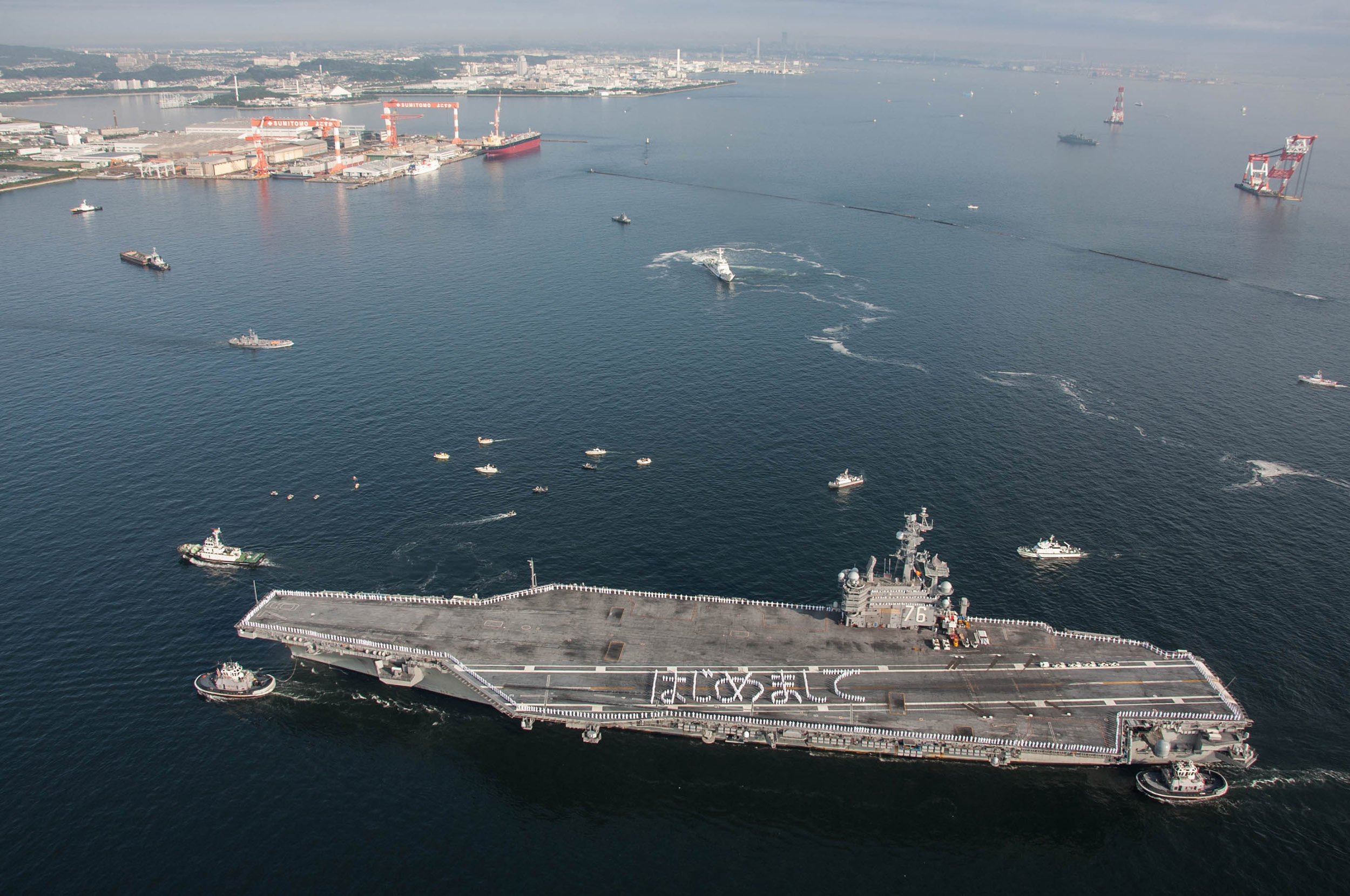
The Navy’s new forward deployed aircraft carrier arrived in Japan on Thursday, according to the service.
USS Ronald Reagan (CVN-76) pulled into Naval Station Yokosuka, Japan after leaving San Diego in late August, the service announced via Twitter.
Now the Nimitz-class nuclear carrier will assume the role of the U.S. forward deployed carrier in 7th Fleet, replacing the USS George Washington (CVN-73) which is currently operating in the Western Pacific in U.S. Southern Command in route to Newport News Shipbuilding for a multi-billion mid-life refueling and complex overhaul which will last about four years.
Secretary of the Navy Ray Mabus, who was on hand for Reagan’s arrival said the carrier and the government of Japan’s welcome are “”visible symbols of our shared commitment to one another and regional stability,” according to the Associated Press.
“Together we provide the most critical pillar of international security, one that only maritime services can deliver,” he said.
While the welcome was largely warm there was a small group on hand who protested the deployment and Japan’s move to cooperate more militarily with the U.S., according to the AP.
Similar protests occurred when Washington — the first nuclear carrier to be based in Japan — arrived in 2008.
Regan will be replaced in San Diego with USS Theodore Roosevelt (CVN-71) — currently in U.S. Central Command operating against the Islamic State of Iraq and Syria (ISIS or ISL) as part of Operation Inherent Resolve.
The service elected to complete the three carrier swap moving a minimal amount of crew requiring several sailors to be assigned to new ships.
“Approximately two-thirds of each crew will remain in their original homeport while one-third will remain with their ship, including reactor department personnel and aircraft carrier commanding officers, executive officers and command master chiefs,” read a Navy statement.
According to estimates from the Navy, the swap will save the service about $41 million in moving expenses for the crews.





